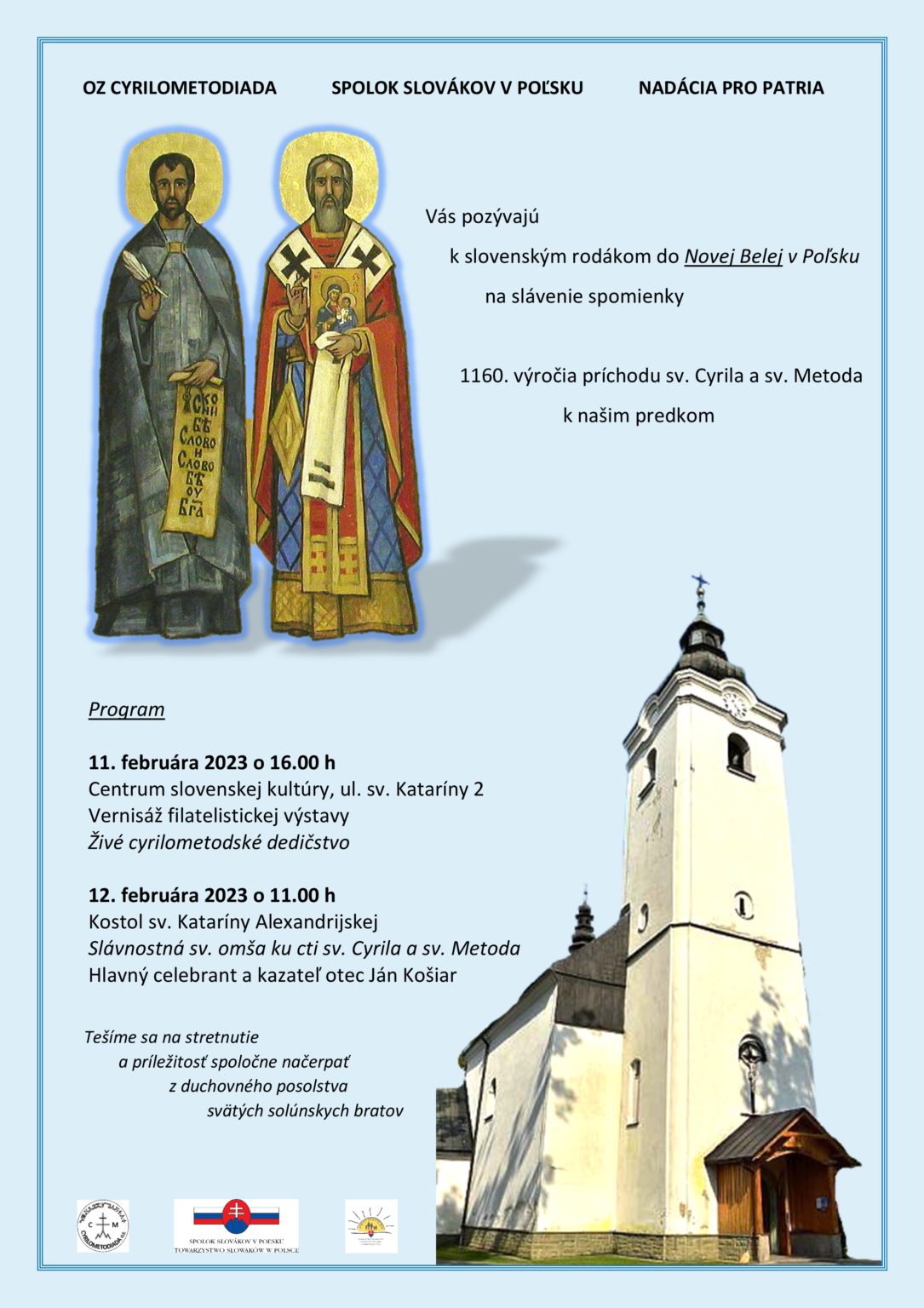1160TH ANNIVERSARY OF THE ARRIVAL OF ST. CYRIL AND ST. METHODIUS TO OUR ANCESTORS
Cyril-Methodius celebration for Slovak natives in Nová Belá on the Spiš region in Poland
This year we commemorate the 1160th anniversary of the arrival of St. Cyril and St. Methodius to our ancestors.
14 February marks the 1154th anniversary of St. Cyril’s passing.
The nongovernmental organization CYRILOMETODIADA, the Association of Slovaks in Poland, and the PRO PATRIA Foundation cordially invite you to the Cyril-Methodius celebration for Slovak natives in Nová Belá in the Spiš region in Poland.
Our program starts on Saturday, 11 February, at 4 pm with the opening of the philatelic exhibition Living Cyrillo-Methodius Heritage, the author of which is the philatelist Mr. Jozef Kútny from Močenok, Slovakia.
The exhibition will take place in the Centre of Slovak Culture in Nová Belá (Nowa Biala). On the occasion of the exhibition, an occasional stamp and ticket will be introduced, which will be put into postal circulation in Slovakia by the Club of Philatelists 52 – 46 Močenok on Friday, 10 February 2023. The author of the graphic rendering of the unique stamp is Mr. Adrián Ferda from Slovenská pošta, a.s., POFIS Bratislava.
Festive St. mass in honor of Saints Cyril and Methodius, co-patrons of Europe, will be celebrated on Sunday, 12 February 2023, at 11:00 am by Father Ján Košiar in the local Church of St. Catherine of Alexandria.
The Old Slavonic language is the fourth liturgical language, God’s blessing, and the genius of St. Cyril and St. Methodius, co-patrons of Europe, laid the foundations of Slovak, Slavic, and Central European education. Thanks to the wise decision of princes Rastislav, Svätopluk, and Koceľ, who turned to the Byzantine emperor Michael III to send them missionaries, announcers of God’s word in an understandable language, our ancestors received the gift of true faith and culture.
Approval of liturgical books in the Old Slavonic language by pope Hadrian II was not only a liturgical-legal act, but also a cultural landmark because the language of our ancestors became the fourth liturgical, but also the cultural and diplomatic language of the Christian West.
Thus, St. Cyril and St. Methodius brought the Old Slavonic language and script not only to the churches of Rastislav and Svätopluk in the Great Moravian Empire but from that time it was possible to celebrate the liturgy in this language and write sacred religious and legal works, novels, poetry, and even professional texts in Latin and Byzantine.
The Old Slavonic writing and God’s blessing in the native Slavonic languages gradually spread throughout the whole Slavic world and became the basis of modern Slavonic culture.
Daniela Suchá, CYRILOMETODIADA, o. z.
